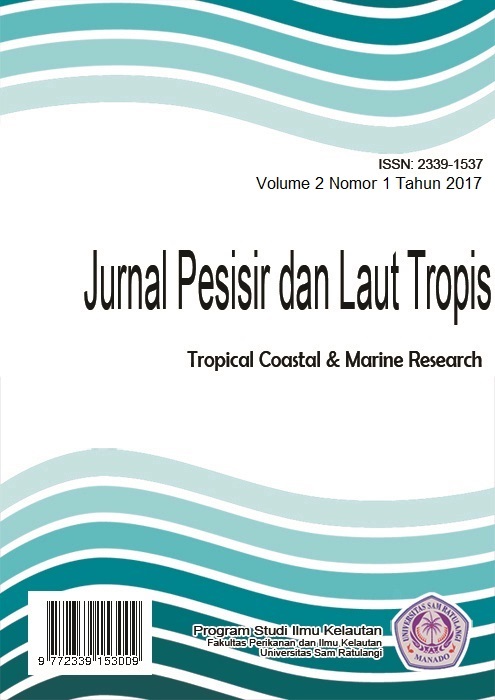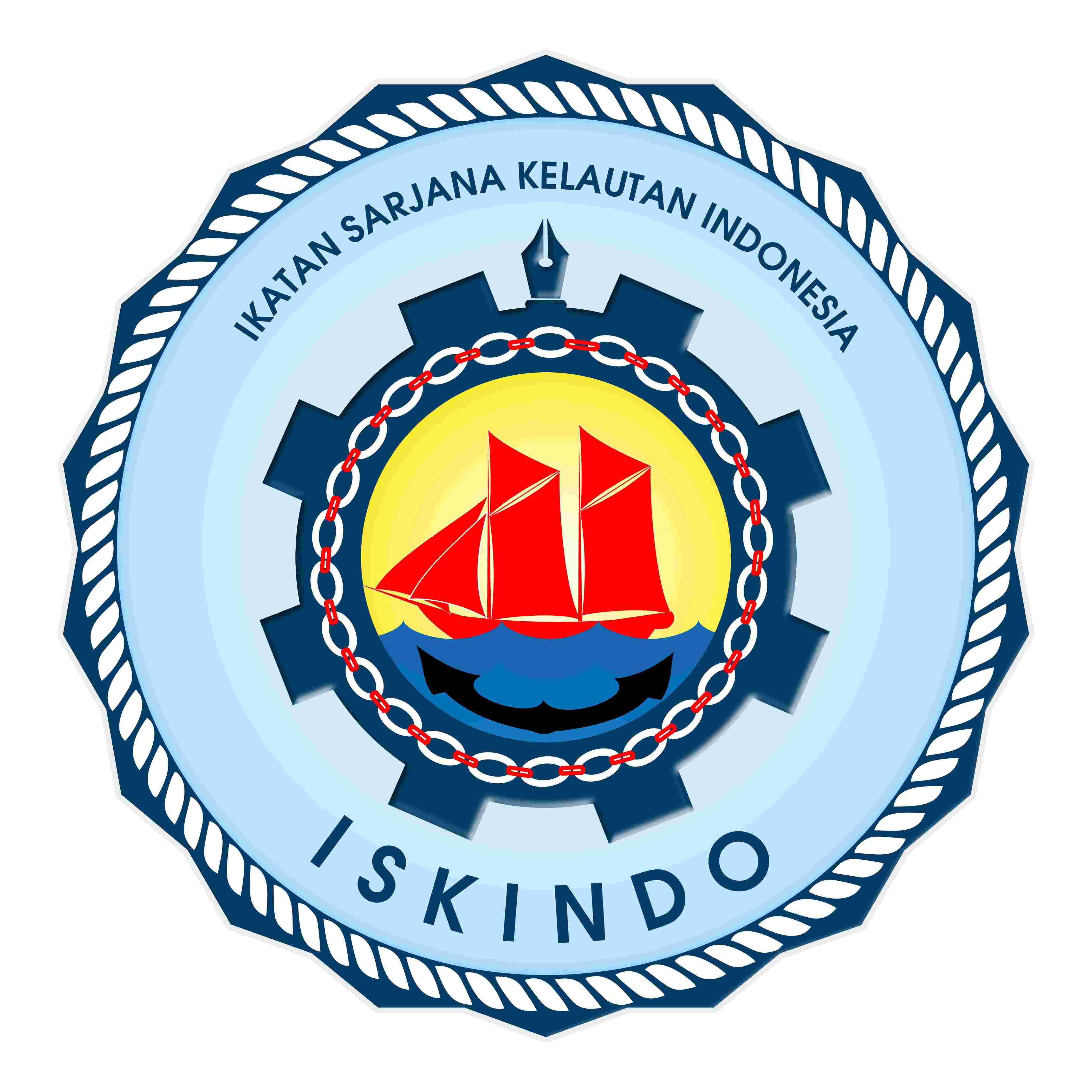SUBSTANSI ANTIBAKTERI JAMUR ENDOFIT PADA LAMUN ASAL PERAIRAN TONGKAINA
DOI:
https://doi.org/10.35800/jplt.5.3.2017.24265Abstract
Seagrass is a part of Phanerogamae, commonly has a symbiotic relationship with microbial endophytes. The types of microbes those have ability to produce bioactive compounds with potentially exploited for medical, agriculture and industrial purposes. Antibacterial testing using the modified Kirby-Bauer method. The fungi show a strong antibiotic activity which cultivated statically and Staphylococcus aureus was induced in rice medium for 10 days. The purpose of inducing bacteria to the culture is to stimulate a strong antibiotic activity through Silence Biosynthesis Pathway. Fungal isolates were macerated with 96% of ethanol for 24 hours. Partition process was performed by adding solvents (ethyl acetate, n-hexane, ethanol and water) to get n-hexane, ethanol and water fractions. All fractions were tested their activity against clinical isolates bacteria S. aureus and Escherichia coli. Ten fungal endophytes were isolated from seagrass Thalassia hemprichii and Enhalus acoroides. Two isolates derived from the leaf of both seagrass specimens (E.D.1 and Th.D.1) showed strong antibacterial activity against S. aureus only. Antibacterial activity test of each fraction both active isolates show in water and ethanol fractions. This indicates the active antibacterial compounds of both endophytic fungi have semi-polar and polar characteristics. However, bacterial induction has no effect on their antibacterial activity.
Keywords : Endophytic fungi, Thalassia hemprichii, Enhalus acoroides, antibacterial activity Staphylococcus aureus and Escherichia coli.
Lamun merupakan tanaman tingkat tinggi yang mempunyai hubungan simbiosis dengan mikroba jamur endofit. Mikroba endofit ini mempunyai kemampuan untuk memproduksi senyawa-senyawa bioaktif dengan potensi yang besar untuk dieksploitasi dan menghasilkan yang bermanfaat di bidang medis, pertanian, dan industri. Isolasi jamur dilakukan mengacu pada penelitian Bara et al (2013). Pengujian antibakteri dilakukan berdasarkan metode Kirby-Bauer yang dimodifikasi. Jamur memperlihatkan aktivitas antibiotik yang kuat dikultivasi statis dan di induksikan bakteri S. aureus dalam media nasi selama 10 hari. Tujuan pemberian bakteri pada kultur yaitu untuk memicu adanya aktivitas antibiotik yang lebih kuat melalui jalur biosintesis senyap (Silence Biosintethic Pathway) pada jamur tersebut. Isolat jamur di maserasi dengan menambahkan etanol 96% selama 24 jam. Proses partisi dengan menambahkan pelarut (etil asetat, n-heksan, etanol dan air) untuk memperoleh fraksi n-heksan, etanol dan air. Tiap fraksi diuji kembali aktivitas antibiotiknya pada bakteri S. aureus dan Escherichia coli. Hasil penelitian ini diperoleh sepuluh isolat jamur dari lamun T. hemprichii dan E. acoroides. Dua isolat daun (E.D.1 dan Th.D.1) menunjukkan aktivitas yang kuat terhadap bakteri S. aureus. Pengujian aktivitas antibakteri tiap fraksi kedua isolat jamur memperlihatkan fraksi air dan etanol yang menunjukkan aktivitas penghambat. Hal ini menunjukkan bahwa senyawa aktif antibakteri kedua jamur endofit berisfat semi polar dan polar. Induksi bakteri tidak memberikan pengaruh terhadap aktivitas antibakteri.
Kata Kunci : jamur endofit, Thalassia hemprichii, Enhalus acoroides, aktivitas antibakteri Staphylococcus aureus dan Escherichia coli.
















